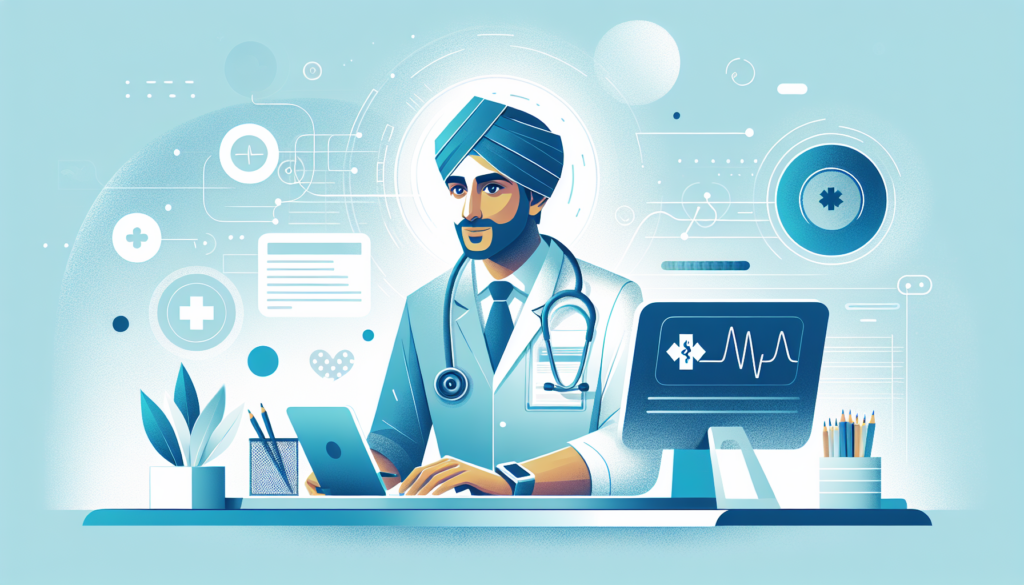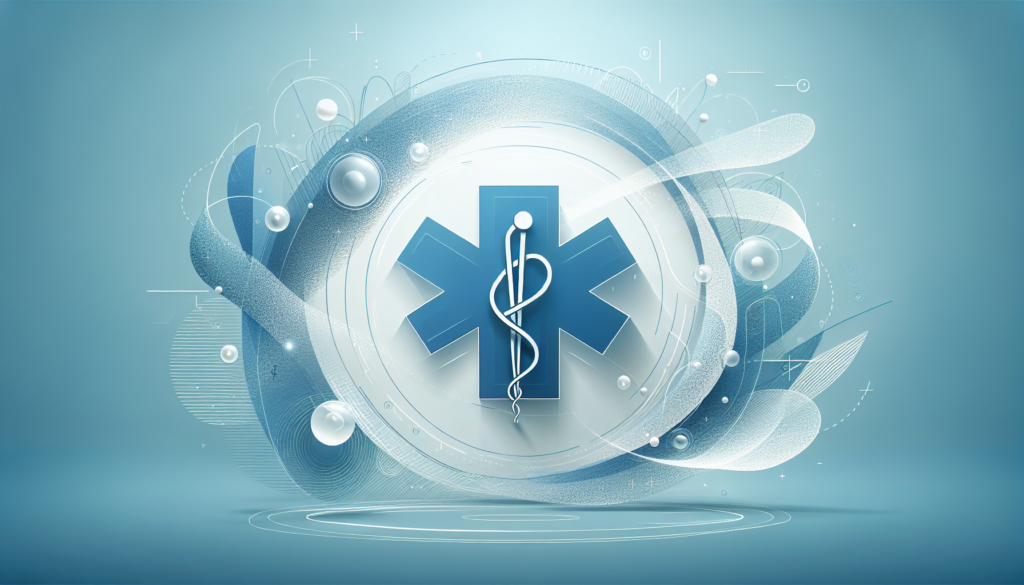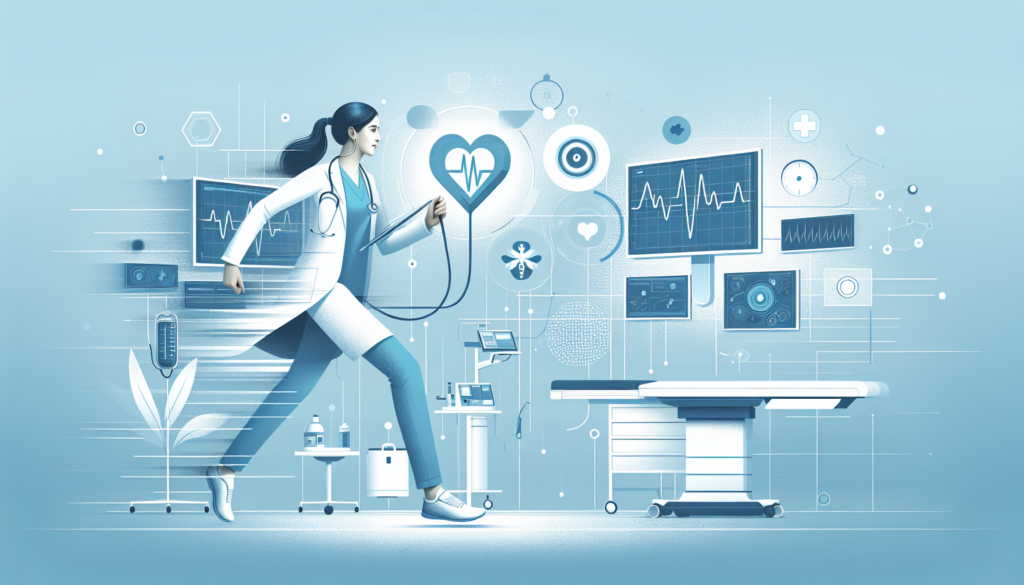The Essential Role of Medical Transcription in Healthcare
In the intricate ecosystem of healthcare, medical transcription forms a vital link between patient care and the requisite documentation that supports it. This process involves the conversion of voice-recorded reports as dictated by physicians and other healthcare providers into text format. Historically, medical transcription has been a cornerstone in maintaining comprehensive patient records, ensuring that details of patient encounters, treatment plans, and medical histories are accurately captured and readily accessible. Given the high stakes of medical record accuracy, which can heavily influence diagnostic and treatment decisions, the role of medical transcription cannot be overstated.
The duty of a medical transcriptionist extends beyond simple dictation. They are responsible for interpreting and transcribing complex medical terminology and abbreviations into a clear, concise document. This requires a deep understanding of medical language, a meticulous attention to detail, and a steadfast dedication to preserving the integrity of patient data. The transcriptionists, functioning as silent scribes, create documents that may include discharge summaries, medical histories, diagnostic test results, operative reports, consultation notes, and other critical components of a patient’s medical record.
- Detailed patient records: Include discharge summaries, medical histories, and diagnostic test results.
- Complex terminology: Require in-depth knowledge of medical language and abbreviations.
- Accuracy: Transcriptions must be precise to ensure proper patient care and treatment decisions.
A defining attribute of medical transcription that bolsters its necessity is the creation of a permanent and legal document that stands as a testament to the patient-provider interaction. This legal significance is twofold; it provides an authoritative narrative for insurance claims and billing processes, and it serves as a potential source of evidence in legal cases. The accuracy of transcription is thus not only a matter of patient welfare but also of legal compliance and financial integrity. As the industry progresses, the evolution of transcription services, such as those provided by Scribemd.ai, might replace traditional transcription methods. Leveraging AI-powered digital scribe technology can streamline the documentation process, reduce errors, and alleviate the administrative burden on medical professionals.
Despite the advent of advanced electronic health record systems (EHRs), the need for expert transcription has not diminished. On the contrary, in many healthcare settings, it has become integrated with EHR systems, enhancing the quality of the data entered and ensuring better interoperability across different healthcare platforms. This synergy allows for improved continuity of care, as providers have access to well-organized and thorough medical records that are essential for managing patient health outcomes effectively. The integration of transcription with EHRs also adds a layer of verification to the clinical documentation process, safeguarding against the potential pitfalls of manual data entry by healthcare professionals who may not be as versed in the nuances of medical recordkeeping.
- Legal document: Medical transcriptions act as legal records for insurance and potential legal cases.
- AI integration: Advanced technology, like Scribemd.ai, offering efficiency and accuracy.
- EHRs synergy: Enhanced quality and interoperability in patient health data management.
Advantages of Medical Transcription for Patient Care Quality
In the realm of healthcare, patient care quality is of paramount importance. Medical transcription, when executed with precision using advanced solutions such as an AI-powered digital scribe, plays a crucial role in amplifying this quality. One of the chief benefits of reliable medical transcription is that it creates detailed and accurate patient records. These records are indispensable tools that assist healthcare providers in making informed decisions, tracking patient progress, and ensuring continuity of care. In the absence of precise documentation, medical professionals may overlook critical information, leading to potential misdiagnoses and treatment errors. Hence, accurate transcriptions become a safety net, substantially reducing the risk of clinical mistakes.
Furthermore, by integrating a sophisticated AI-based transcription system like ScribeMD, medical facilities witness a significant uptick in efficiency. Cumbersome paper trails are replaced by digital records that can be swiftly accessed, updated, and shared with the pertinent healthcare team. The following points elucidate the impact of this transition on patient care:
– Enhanced Collaboration: Easier access to comprehensive patient notes fosters better communication among healthcare providers.
– Time Conservation: Providers spend less time documenting, allowing for more patient interaction and personalized care.
– Immediate Availability: Healthcare professionals can quickly reference patient history, leading to faster and more effective treatment plans.
By minimizing administrative tasks, the medical staff is liberated to channel their expertise and attention where it’s most needed – the patients themselves.
Moreover, the adoption of automated medical transcription services serves as a boon to patient satisfaction. The speed and accuracy delivered by AI-powered transcription tools like ScribeMD ensure that patients’ health concerns and treatment details are precisely captured. This contributes to a greater sense of being heard and understood, building patient trust and compliance regarding their treatment regimens. As a direct consequence, there is an observable enhancement in patient outcomes – a quintessential measure of care quality. To sum this up, the strategic utilization of medical transcription provides a clear pathway to not just maintain, but elevate the standards of patient care within the intricate landscape of modern healthcare.
Improving Healthcare Efficiency with Medical Transcription
The healthcare industry is increasingly seeking innovative solutions to streamline operations and enhance patient care. One significant stride towards operational efficiency is the integration of medical transcription services. By converting spoken language into a written text format, medical transcription ensures that healthcare professionals can quickly document patient encounters and treatment plans. This not only simplifies the process of record-keeping but also greatly reduces the potential for errors that can occur with manual note-taking.
Medical transcription contributes to healthcare efficiency in several key areas. First and foremost, it allows clinicians to devote more time to patient care rather than administrative tasks. This is crucial, as it optimizes the clinician’s availability and engagement with patients. Furthermore, accurate and swift transcription of medical records helps in maintaining up-to-date patient documentation, which is essential for ongoing care and coordination among healthcare teams.
- Time Saved on Documentation: Clinicians can focus on patient interaction instead of paperwork.
- Reduced Error Margin: Digital transcription minimizes the risk of human error in documentation.
- Enhanced Coordination: Accurate records improve collaboration among healthcare providers.
Moreover, the accessibility of digital medical records fosters a more integrated healthcare system. As healthcare providers transition from the traditional paper records to electronic health records (EHRs), medical transcription services play a pivotal role. By enabling seamless integration with EHR systems, transcription services ensure that all patient information is readily available to authorized personnel, facilitating immediate access to a patient’s medical history, treatment regimens, and other critical data.
Lastly, the optimization of medical transcription services also has a significant impact on cost containment within healthcare institutions. Manual transcription is not only time-consuming but also costly, involving additional staff and resources. Automated transcription solutions, such as those powered by AI like ScribeMD, are designed to reduce labor costs and resource allocation. By leveraging advanced technology, medical professionals can expect a high accuracy rate and rapid turnaround time for transcribed documents.
- Integration with EHRs: Ensures all patient data is efficiently stored and easily retrievable.
- Cost-Effectiveness: Automating transcription processes reduces the need for additional transcription staff.
- Quick Turnaround: AI-powered transcription delivers faster processing times for medical documentation.
Financial and Time Savings Offered by Medical Transcription Services
The advent of medical transcription services, like those offered by ScribeMD.ai, has brought about a significant reduction in the operational costs associated with medical documentation. When health professionals switch from traditional to electronic note-taking, they witness a decrease in the need for extensive manual labor. This shift does not just save money on salaries and benefits but also reduces overhead costs related to physical space and storage for paper records. Investment in digital infrastructure, which may seem substantial at the outset, pays dividends in the long run with a lower cost per patient visit when spread over the number of patients a clinic sees annually.
- Decrease in manual labor costs
- Reduction in physical storage space and related expenses
- Lower long-term investment costs
In addition to financial benefits, the efficiency of medical transcription services heralds considerable time savings for healthcare providers. Automating the medical note-taking process drastically cuts down on the hours spent by physicians on paperwork, enabling them to reallocate that time to patient care. This time reallocation not only potentially increases the number of patient interactions but also enhances the quality of care. By ensuring that medical professionals have more time for face-to-face consultations, transcription services play a crucial role in optimizing the patient experience and improving clinical outcomes.
- Significant reduction in paperwork hours
- Increased time for patient care
- Optimization of patient experience
From a broader perspective, the harnessing of AI-powered transcription services presents an opportunity for healthcare institutions to streamline their operations. ScribeMD.ai‘s advanced language learning models facilitate real-time documentation with a high accuracy rate, which reduces the frequency of errors common in manual transcription and consequently the time spent on corrections. Moreover, regulatory compliance is more easily maintained with electronic records, precluding potential legal fees and penalties that can arise from documentation errors.
- Reduction of transcription errors and correction time
- Maintenance of regulatory compliance
- Avoidance of legal fees due to documentation issues
Furthermore, the non-linear nature of digital documentation means data can be accessed and edited simultaneously by multiple users, an impossibility with paper records. This kind of collaborative environment promotes a seamless integration across various departments, further accelerating the patient care cycle and reducing downtimes. ScribeMD’s platform capitalizes on these efficiencies, offering a robust solution that transforms how medical data is recorded, accessed, and utilized, thereby marking a new era in healthcare management where technology enhances human expertise.
- Simultaneous access and editing by multiple users
- Smoother cross-departmental integration
- Acceleration of the patient care cycle
Integration of Advanced Technology in Medical Transcription
The healthcare sector has witnessed a revolutionary change with the integration of advanced technology in medical transcription. As a crucial aspect of clinical documentation, medical transcription has historically been a time-consuming process, which often resulted in delayed report turnaround and potentially impacted patient care. However, by leveraging the power of advanced technologies like Artificial Intelligence (AI), Natural Language Processing (NLP), and Machine Learning (ML), the transcription process has been radically transformed. AI-powered systems like ScribeMD are now capable of understanding complex medical terminologies and patient information, greatly enhancing accuracy and efficiency in generating medical notes.
At the heart of this technological leap is the emphasis on accuracy and rapid response time. Advanced transcription tools are equipped with state-of-the-art algorithms that not only transcribe speech to text but also understand the context, draw inferences, and update medical records in real-time. The impact of this high-level precision is manifold:
– Reduction in the occurrence of errors.
– Streamlining of healthcare workflows.
– Assurance of compliance with regulatory standards.
– Availability of more time for healthcare providers to focus on direct patient care.
These systems’ ability to learn and improve over time ensures that the transcription becomes more efficient with use, adapting to the specific needs and dialects of medical professionals.
With these advancements, the role of the medical transcriptionist is evolving. No longer do they need to handle the brunt of transcription work manually. Instead, they can become overseers, managing the smart systems that automate the transcription process. This shift in responsibilities opens up new possibilities for healthcare professionals:
– Emphasis on quality control and editing to ensure utmost accuracy.
– Analyzing transcribed reports to garner insights for better patient care.
– Strategic management of documentation and electronic health record systems.
Integrating advanced technology into medical transcription is not just about adopting new tools; it represents a fundamental shift in the healthcare documentation paradigm.
Beyond the transcription itself, these technologies also contribute to a profound enhancement in data management and analytics. Accumulated transcribed data can be used to draw patterns related to patient health outcomes, treatment plans, and resource allocation, in a way far quicker and reliable than ever before. This opens the door to a future where predictive analytics and personalized medicine can become commonplace, with transcription data acting as a pivotal informational asset.



